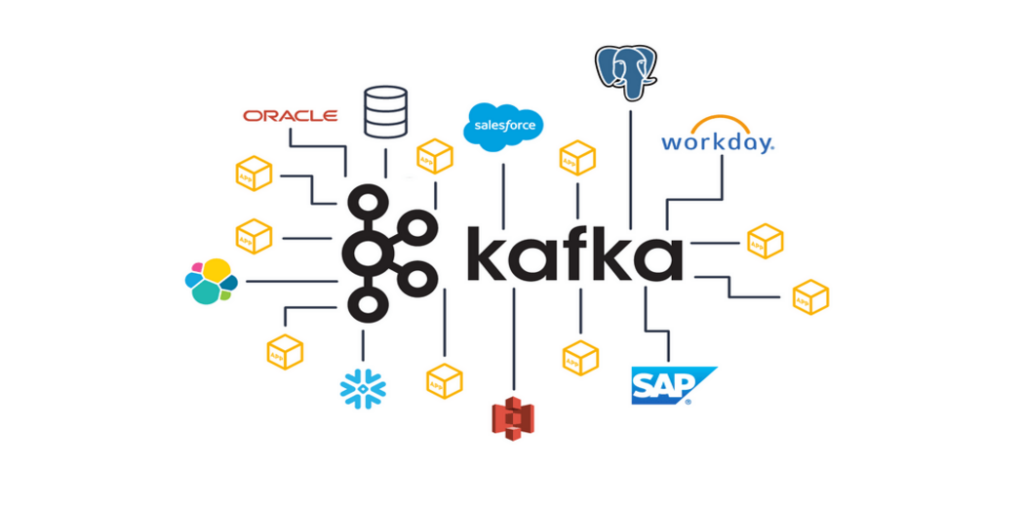Windowing and aggregation are essential techniques in time-based stream processing, enabling developers to analyze and derive insights from data within specific time intervals. Apache Kafka provides powerful tools and APIs for implementing windowing and aggregation operations efficiently. In this topic, we will explore windowing and aggregation techniques for time-based processing, empowering learners to leverage these techniques effectively in their stream processing pipelines.
Understanding Windowing:
- Tumbling Windows:
Tumbling windows divide the data stream into non-overlapping fixed-size windows. Each record belongs to exactly one window. We will explore how to define and process tumbling windows using the Kafka Streams API.
Code Sample 1: Tumbling Window Aggregation with Kafka Streams
KStream<String, Integer> inputStream = builder.stream("input-topic");
TimeWindowedKStream<String, Integer> windowedStream = inputStream
.groupByKey()
.windowedBy(TimeWindows.of(Duration.ofMinutes(5)))
.reduce((value1, value2) -> value1 + value2);
windowedStream.toStream().to("output-topic");- Hopping Windows:
Hopping windows slide over the data stream at fixed intervals, allowing overlapping windows. We will explore how to define and process hopping windows using the Kafka Streams API.
Code Sample 2: Hopping Window Aggregation with Kafka Streams
KStream<String, Integer> inputStream = builder.stream("input-topic");
TimeWindowedKStream<String, Integer> windowedStream = inputStream
.groupByKey()
.windowedBy(TimeWindows.of(Duration.ofMinutes(10)).advanceBy(Duration.ofMinutes(5)))
.reduce((value1, value2) -> value1 + value2);
windowedStream.toStream().to("output-topic");- Session Windows:
Session windows group together records based on their temporal proximity, defining a gap or inactivity period between sessions. We will explore how to define and process session windows using the Kafka Streams API.
Code Sample 3: Session Window Aggregation with Kafka Streams
KStream<String, Integer> inputStream = builder.stream("input-topic");
SessionWindowedKStream<String, Integer> windowedStream = inputStream
.groupByKey()
.windowedBy(SessionWindows.with(Duration.ofMinutes(10)).grace(Duration.ofMinutes(2)))
.reduce((value1, value2) -> value1 + value2);
windowedStream.toStream().to("output-topic");Understanding Aggregation:
- Count Aggregation:
Count aggregation calculates the number of records within a window. We will explore how to perform count aggregation using the Kafka Streams API.
Code Sample 4: Count Aggregation with Kafka Streams
KStream<String, Integer> inputStream = builder.stream("input-topic");
KTable<Windowed<String>, Long> countTable = inputStream
.groupByKey()
.windowedBy(TimeWindows.of(Duration.ofMinutes(5)))
.count();
countTable.toStream().to("output-topic");- Sum Aggregation:
Sum aggregation calculates the sum of values within a window. We will explore how to perform sum aggregation using the Kafka Streams API.
Code Sample 5: Sum Aggregation with Kafka Streams
KStream<String, Integer> inputStream = builder.stream("input-topic");
KTable<Windowed<String>, Integer> sumTable = inputStream
.groupByKey()
.windowedBy(TimeWindows.of(Duration.ofMinutes(5)))
.reduce((value1, value2) -> value1 + value2);
sumTable.toStream().to("output-topic");Reference Link: Apache Kafka Documentation – Kafka Streams – https://kafka.apache.org/documentation/streams/
Helpful Video: “Kafka Streams in 10 Minutes” by Confluent – https://www.youtube.com/watch?v=VHFg2u_4L6M
Conclusion:
Windowing and aggregation techniques are crucial for time-based processing in stream processing applications. Apache Kafka’s support for tumbling windows, hopping windows, and session windows enables developers to analyze data within specific time intervals. The provided code samples demonstrate the implementation of windowing and aggregation operations using the Kafka Streams API.
By leveraging windowing and aggregation techniques, developers can derive insights from streaming data, such as counting occurrences, calculating sums, and performing various other aggregations within specific time windows. The reference link to the official Kafka documentation and the suggested video resource further enhance the learning experience.
With these techniques, developers can build powerful and scalable stream processing pipelines that enable real-time analytics and decision-making based on time-based data analysis. Windowing and aggregation techniques are essential tools in the toolkit of stream processing developers working with Apache Kafka.












